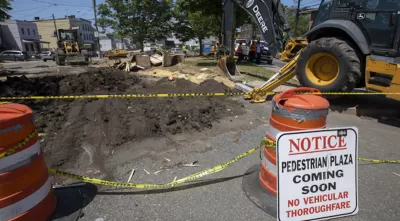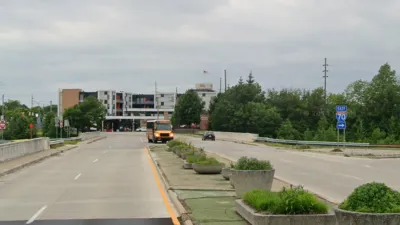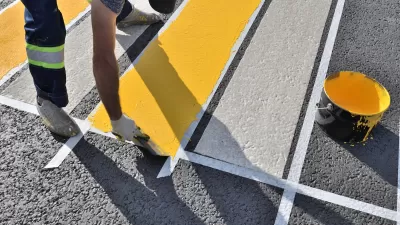The city’s new Department of Infrastructure consolidates the management of public amenities and has guided the creation of new bike lanes, pedestrian plazas, and parks.

The decision to consolidate the management of streets, transit, parks, municipal buildings, and other public facilities into one Department of Infrastructure in Jersey City, New Jersey has made a significant impact on the city’s public realm, writes Robert Steuteville in Public Square.
The consolidation has helped the city understand its transportation and mobility needs and resources from a broader perspective. “The department and policies leading up to its creation were pivotal in implementing nearly 25 miles of protected bike lanes, carving pedestrian plazas from excess asphalt, planting more than 1,000 trees, building new parks, renovating public spaces, and creating parklets for outdoor dining.”
The rapid changes are also due to the city’s embrace of tactical urbanism strategies — quick-build, low-cost interventions usually implemented by local activists that skirt traditional bureaucratic processes. In the case of Jersey City, the city itself adopted the concept to deploy nimble, low-cost projects that have led to permanent changes. “Leftover tennis court paint and planters were used to build a pedestrian plaza through the heart of the downtown dating from the 17th Century. Road diets were implemented along major streets to establish the protected bike lane network using paint and vertical separation. The nimble fleet of micro-transit vans was employed to fill gaps in transit access.” In 2022, the city eliminated traffic deaths for a full year on city-managed roads thanks in large part to quick-build road safety interventions.
For Steuteville, Jersey City is a prime example of what can happen when a city takes a holistic view of infrastructure and rejects bureaucracy in favor of immediate — and sometimes life-saving — improvements to the public realm.
FULL STORY: Infrastructure Department boosts the public realm

Trump Administration Could Effectively End Housing Voucher Program
Federal officials are eyeing major cuts to the Section 8 program that helps millions of low-income households pay rent.

Planetizen Federal Action Tracker
A weekly monitor of how Trump’s orders and actions are impacting planners and planning in America.

Ken Jennings Launches Transit Web Series
The Jeopardy champ wants you to ride public transit.

Crime Continues to Drop on Philly, San Francisco Transit Systems
SEPTA and BART both saw significant declines in violent crime in the first quarter of 2025.

How South LA Green Spaces Power Community Health and Hope
Green spaces like South L.A. Wetlands Park are helping South Los Angeles residents promote healthy lifestyles, build community, and advocate for improvements that reflect local needs in historically underserved neighborhoods.

Sacramento Plans ‘Quick-Build’ Road Safety Projects
The city wants to accelerate small-scale safety improvements that use low-cost equipment to make an impact at dangerous intersections.
Urban Design for Planners 1: Software Tools
This six-course series explores essential urban design concepts using open source software and equips planners with the tools they need to participate fully in the urban design process.
Planning for Universal Design
Learn the tools for implementing Universal Design in planning regulations.
Heyer Gruel & Associates PA
Ada County Highway District
Institute for Housing and Urban Development Studies (IHS)
City of Grandview
Harvard GSD Executive Education
Toledo-Lucas County Plan Commissions
Salt Lake City
NYU Wagner Graduate School of Public Service





























